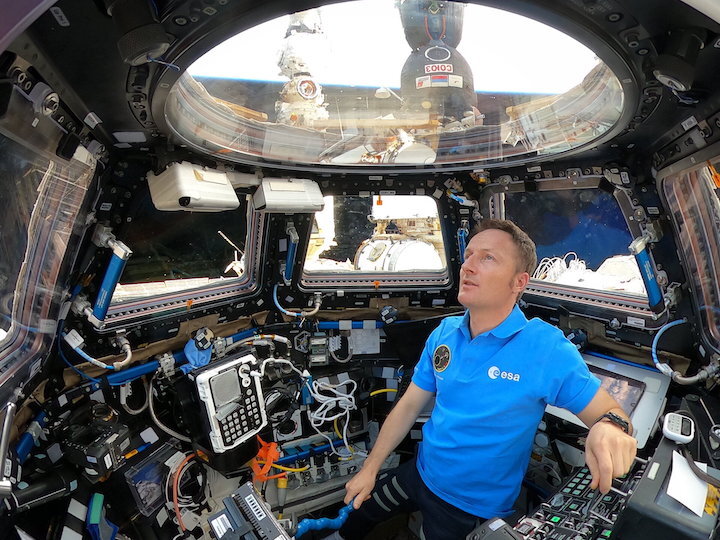28.02.2022

Happy 100 days in space to ESA astronaut Matthias Maurer. The first-time space flier marked the milestone on 19 February 2022 and what a busy 100-days it been.
In a Twitter post marking the milestone, Matthias wrote, “100 days may sound like a lot, but it feels like I've only just arrived.”
Even before launching for his Cosmic Kiss mission on a SpaceX Dragon as part of Crew-3, Matthias was on the science, providing researchers with pre-flight measurements for a variety of experiments.
Since arriving, Matthias has continued to be poked and prodded while working, exercising and even sleeping, all in the name of science and exploration.
Experiments like Myotones and EasyMotion are tracking the biochemical properties of his muscle properties as well as optimising them for fitness in space.
Matthias sports a breathing mask and devices strapped to his chest during cycling exercises for DLR’s Metabolic Space experiment, aimed at improving cardiopulmonary diagnostics.
Other wearables like thermal sensors monitor his core temperature and circadian rhythms – known to alter in microgravity – for long-standing studies tracking this change in astronauts on the Space Station.
Matthias is even being studied in his sleep. He wears a headband to bed that monitors different sleep phases and sleep efficiency for the DREAMS experiment.
Of course, astronauts aren’t the only subjects of space experiments. Matthias and his fellow Crew-3 mates have facilitated a host of other studies on materials science, acoustics, biofilms and more. Read a more in-depth breakdown of the science on board here.
What does Matthias have to say about all that?
“There is still so much to learn & discover. I'm enjoying every #CosmicKiss moment up here & looking forward to many more mission highlights.”
Keen to share his mission with everyone, Matthias has been prolifically posting exciting content across his platforms. Make sure to follow Cosmic Kiss on Twitter, Facebook, Instagram, YouTube the Cosmic Kiss mission page and in regular Space Station updates from ESA.
Quelle: ESA
